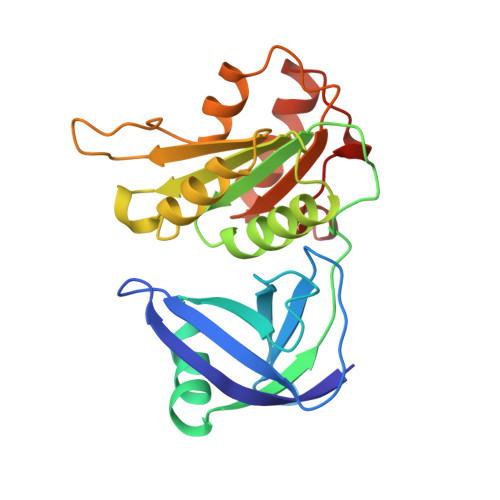Crystal structure of NAD(P)H:flavin oxidoreductase from Escherichia coli.
Ingelman, M., Ramaswamy, S., Niviere, V., Fontecave, M., Eklund, H.(1999) Biochemistry 38: 7040-7049
- PubMed: 10353815
- DOI: https://doi.org/10.1021/bi982849m
- Primary Citation of Related Structures:
1QFJ - PubMed Abstract:
Flavin reductases use flavins as substrates and are distinct from flavoenzymes which have tightly bound flavins. The reduced flavin can serve to reduce ferric complexes and iron proteins. In Escherichia coli, reactivation of ribonucleotide reductase is achieved by reduced flavins produced by flavin reductase. The crystal structure of E. coli flavin reductase reveals that the enzyme structure is similar to the structures of the ferredoxin reductase family of flavoproteins despite very low sequence similarities. The main difference between flavin reductase and structurally related flavoproteins is that there is no binding site for the AMP moiety of FAD. The direction of the helix in the flavin binding domain, corresponding to the phosphate binding helix in the flavoproteins, is also slightly different and less suitable for phosphate binding. Interactions for flavin substrates are instead provided by a hydrophobic isoalloxazine binding site that also contains a serine and a threonine, which form hydrogen bonds to the isoalloxazine of bound riboflavin in a substrate complex.
- Department of Molecular Biology, Swedish University of Agricultural Sciences, Biomedical Center, Uppsala.
Organizational Affiliation:

















